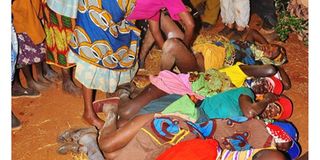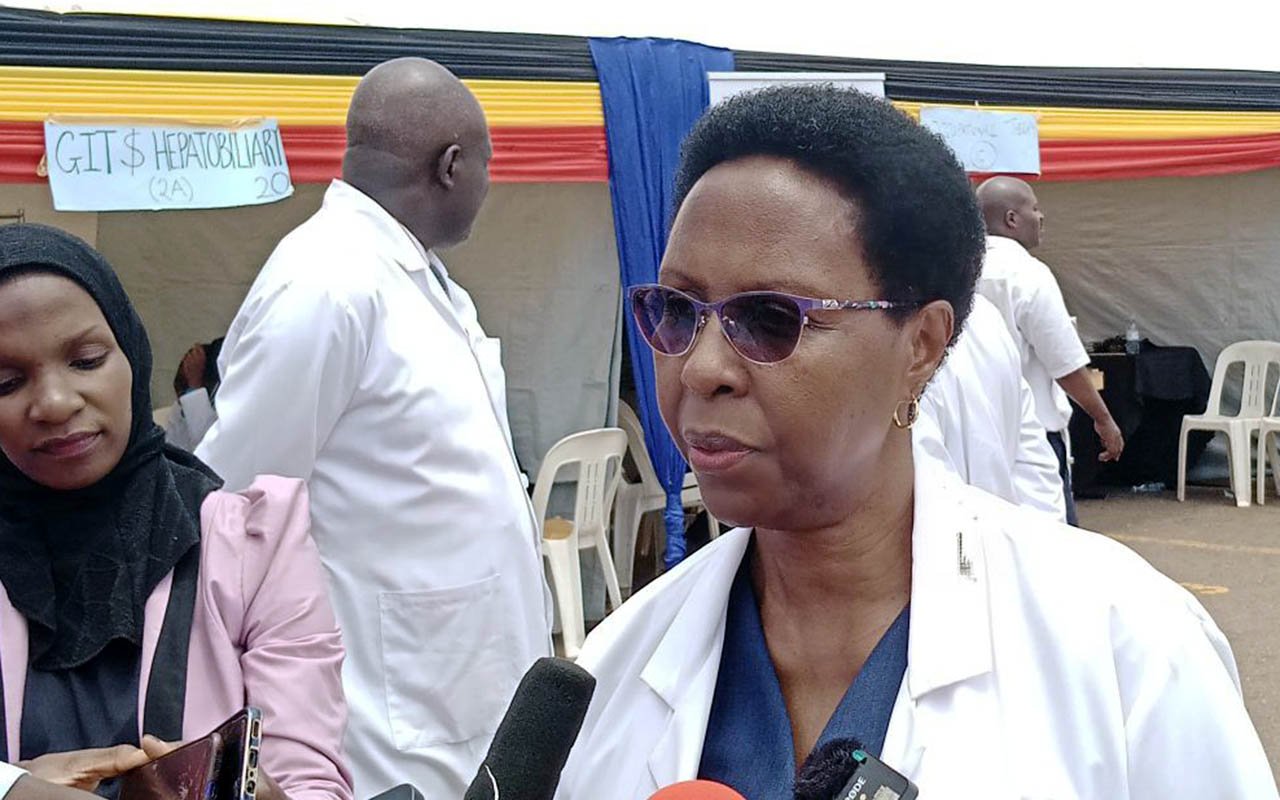The pain of the undesireable ‘cut’

Girls awaiting their fate during their rite of passage rituals.
One day, Martha Mutikat, a registered midwife in Amudat Hospital, was called to rescue a mother who had a distracted labour at home in Achorchor village in Amudat District.
On reaching there, she was stunned to see a group of women-about 20 in number- trying to conduct delivery.
“Some were inserting their fingers in the mother to pull the baby out as others were holding the legs. The mother had fainted because of pain and she was bleeding heavily because they had cut her in an attempt to enlarge the birth canal,” Ms Mutikat recalls.
The midwife ferried her to the hospital, where she underwent an operation purposely to save her life and the baby. The woman managed to survive, but her baby passed on.
The mother, according to Ms Mutikat, failed to have a normal delivery because she had a narrow birth canal -a problem she got after she was circumcised. She belonged to the Pokot –one of the few communities in Uganda that carryout Female Genital Mutilation (FGM/C).
Mutikat, who also hails from the Pokot, says many women in her community experience lifetime pain due to circumcision. The midwife explains that since a girl is cut when still young –at the age of 12 to 14 years- the vagina canal becomes too narrow when the wound cures, triggering morbidity (immediate and long term suffering).
When she is married off after the ritual, the narrowness of the vagina obstructs the penis to go through while having sex. “This calls for hiring of an old woman who uses a horn of a cow to enlarge the canal,” she says.
Again when the woman conceives, she is exposed to more pain during delivery. She can’t give birth normally and each time she delivers, she has to get episiotomy (incising the genitalia).
“Since all the parts that help in elasticity are cut during circumcision, the mother has to get double incision. Cutting on both sides in most cases cause over bleeding that can lead to anaemia and sometimes death,”
Tears after the brutality
Unfortunately, due to long distances to hospitals, majority of the women go to Traditional Birth Attendants (TBAs) who have no skills, worsening the situation.
She says because they lack skills, TBAs can end up either cutting the head of the baby, the bladder or damaging the rectum.
“Damaging the bladder and rectum causes vesicle vaginal fistula and rectal vaginal fistula respectively. Both those disease normally cause family separations in the long run,”
Due to use of too much force while delivering, some women get paralysis (becoming lame) and on the side of the baby, it gets fetal distress (getting tired), which can eventually lead to its death.
Interestingly, Mutikat says she has on several occasions asked women including elders the worthiness of the practice, but none of them has been able to give her a genuine answer. “They normally say they are continuing with the practice to maintain the culture,” the mother of three, who has graduated into a model for fighting FGM, adds.
Because it is a deeply rooted cultural tradition, girls and women are raised into accepting that it is a rite of passage into womanhood and a condition for marriage. Parents think that circumcised girls have more value than those who missed a cut. However, today, Mutikat, who is not circumcised, has embarked on traversing the region educating communities on the dangers of FGM and asking them to abandon it.
The midwife, who always offers herself as an example, says; “I am not circumcised, but I am married, have a good job and respected in the community. So, I move on ask parents to abandon the practice and concentrate on educating their girls to acquire social and economic values.”
jmiti @ug.nationmedia.com




